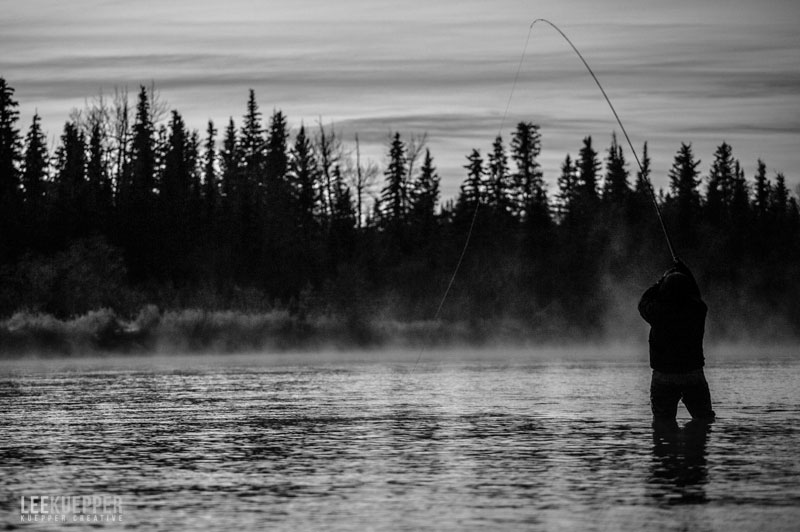3 Tips for More Successful Winter Angling

There is no doubt that winter fishing can provide some of the most extreme conditions that we anglers could ever face. Bitter cold, gale force winds, and frozen reels are all brushed aside in our endless and sometimes fruitless efforts for a tug. Over the years I have fine-tuned the way I approach my winter fishing, increasing the productivity while reducing the potential frustrations. These are my top 3 tips to improve your wintertime angling sessions.
1. Pack less gear
While multiple boxes of flies, various tippet material, and all the gadgets may seem nice to have at first, having to haul all this gear along the river may leave you thinking otherwise. Keep your wintertime packing to a minimum, transporting only the most necessary gear. For me, that is coffee, food, extra gloves, and a spare reel. Packing a spare reel has saved me many times, and will quickly save the day if you find your reel has decided to take a swim in sub zero temperatures. In regards to flies, I primarily stick with winter-time standards for Alaska such as sculpins and leeches. Something meaty enough for a fish to justify burning the energy to chase it down. There is no need to get complicated with your fly selection. Sticking with these known favorites will allow you to spend more time not just fishing, but fishing confidently.
2. Find the Prime Lie
Winter water temperatures without a doubt cause a change in the location and the feeding activity of resident trout. With fewer food sources rolling around down there, fish are forced to make a decision. Move to an easier location (lake) or hunker down and find the rivers most prime lie. What I'm saying here is that you don't want to waste your time in mediocre water. Productive locations in the summer may not equate to success late into the year. Head to a place where the fish can feed most effectively. Ledges, seam lines, and submerged gravel bars all fit the bill.
3. Fish The Water Thoroughly
The biggest sin that I see winter anglers commit is fishing fast. Don't assume that covering more water means finding more fish. Cold weather generally causes the trout to be less active, and a very accurate approach is needed. Fish will not move far to jump on your presentation, so consistently monitoring your depth and speed is crucial. Active fish during the winter are usually few and far between, so make sure you are putting the fly where it needs to be on each and every drift.
Lee Kuepper is professional guide now calling the Kenai River home. He is a co-owner of Alaska's Angling Addiction, chasing the Kenai's monster kings and fabled trout on a regular basis. He is also a member of Loop USA's prostaff and a Certified Fly Casting Instructor through the FFF.